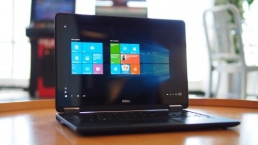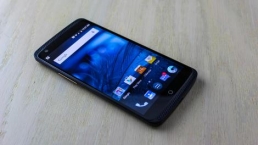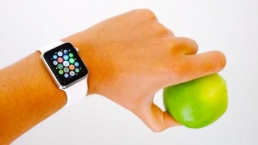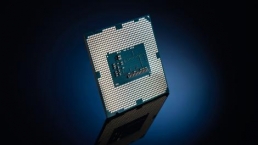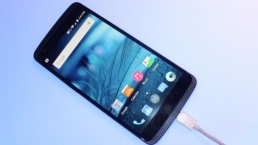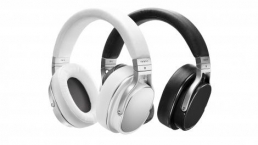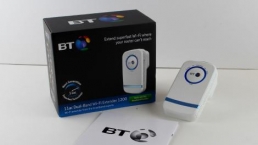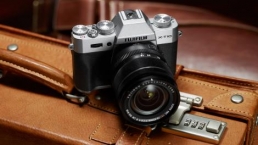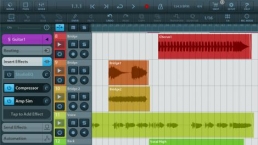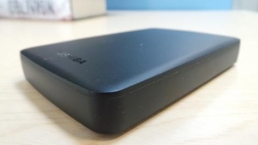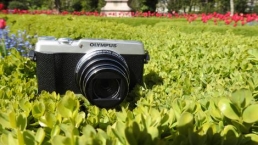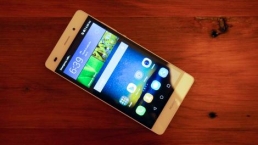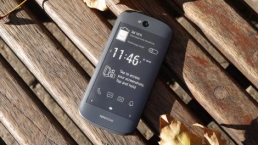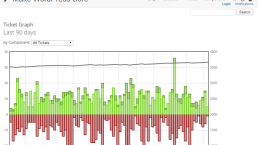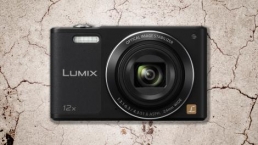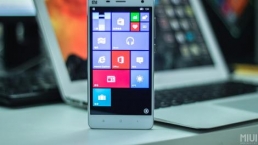
Introduction and features
Canon’s first compact system or mirrorless system camera, the EOS M, seemed very good on paper, but at launch it was expensive and let down by a lacklustre autofocus system that was slow and prone to hunting. Canon issued firmware upgrades that improved the autofocus performance significantly and the price fell with the passage of time, but the damage was done.
Now, in the UK at least, we have the M3. Like the M, the M3 uses an APS-C format sensor, but this time the manufacturer has plumped for the same 24.2-million-effective-pixel device used in the new Canon 750D and Canon 760D. It’s also coupled with the same DIGIC 6 processor as the two new DSLRs have.
This combination allows a native sensitivity range of ISO 100-12,800 with an expansion setting of ISO 25,600. That’s the same as the original M, but that only had an effective pixel count of 18 million so it will be interesting to see how the new camera handles noise.
Bearing in mind the issues with the original M, the M3 has Canon’s latest 49-point Hybrid CMOS AF III autofocus system. Canon claims that this brings a 6x speed increase over the original EOS M after the firmware upgrades. It’s also possible to shoot continuously at up to 4.2fps (frames per second) for approximately 1000 large Fine (highest) quality JPEGs or 5 raw files. That’s not exactly a blistering pace by modern standards, but it’s reasonable.

Canon is aiming the M3 at enthusiast photographers, so naturally it has aperture priority, shutter priority and manual exposure modes along with a collection of automated options that are helpful for less experienced photographers.
These include Creative Assist mode which is designed to help novice photographers take control of the camera and adjust brightness, background blur, color saturation, contrast, warmth and filter effects and see them applied live – and then you can save these effect combinations to use them again without having to understand photographic terms like aperture. It’s even possible to save up to six of your favourite setting combinations for future reuse.


There’s also the usual array of metering modes (384-zone Evaluative, Partial covering 10% at the centre, Spot covering 2% and Centre weighted), exposure compensation to +/-3EV and a shutter speed range of 30-1/4000sec plus bulb mode.
As is now de rigueur, the EOS M3 has Wi-Fi and NFC connectivity built in to allow fast connection to compatible smartphones and tablets. Once a connection has been made the camera can be controlled remotely and images transferred wirelessly using Canon’s free Camera Connect app.

The inclusion of a pop-up flash (GN 5 at ISO 100) and a hotshoe tops-off a pretty comprehensive specification for the M3. The only really glaring omission is a viewfinder; there isn’t one built-in. There is, however, an optional electronic viewfinder (EVF-DC1) available. This is the same unit as can be used with the G1X Mark II and it adds about £100 to the cost of a M3 and lens kit. While this is considerable extra cost, it’s cheaper than purchasing it by itself as it costs around £249.
It’s important to remember that although the EOS M3 uses the same sensor as the 750D and 760D it has the EF-M lens mount that was introduced with the original M. This new mount is necessary because creating a mirrorless camera allows the lens mount to be closer to the sensor than it is in an SLR and a new breed of lenses is required. To date there are still only four Canon EF-M lenses, but there is the EF-EOS M mount adaptor that allows EF and EF-S lenses to be mounted on the M3.
Build and handling
In looks the EOS M3 sits roughly halfway between a G-series compact camera like the Canon G16 and an SLR like the Canon 100D. It has the rectangular shape of the G16 – actually the top-plate is even flatter – combined with the more ergonomically contoured finger grip on its front.
At 366g (including battery and memory card), the M3 is a little lighter than the 100D, but it feels a little heavier than you might expect – it’s deceptively dense. It also feels nice and robust. These two points are likely to be down to the stainless steel element of its steel, magnesium alloy and polycarbonate resin construction.

On the back of the camera is a small, but very effective thumb-ridge that is made from, or at least covered in, the same rubber-like material that coats the front finger grip. This front grip has quite a fine texture and a smart, modern appearance and it provides a superb purchase, making the camera feel comfortable and secure in your hand.
Canon has used a similar, but not identical, control layout to the G16 for the M3 and I found it really easy to use. I especially appreciated the exposure compensation dial on the top-plate as it enables speedy adjustments to be made to exposure. This dial doesn’t have a lock, but it has a fairly stiff action so it doesn’t get knocked out of position easily.
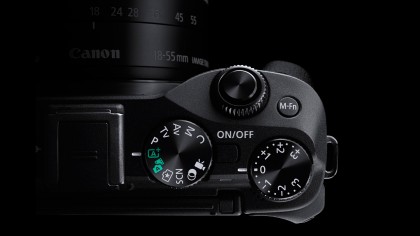
The mode dial alongside the exposure compensation dial is also useful, allowing quick changes in exposure mode and an easy means of checking the camera’s set-up.
I found the control dial around the shutter release easy to reach and use. By default in aperture priority mode it’s used to set aperture and in shutter priority mode, shutter speed. In manual exposure mode it and the control dial around the navigation keys are used to set exposure.
Although the M3 has a full complement of physical controls, the 3-inch 1,040,000-dot LCD screen is touch-sensitive. Canon has implemented the touch-controls very well and you can slip seamlessly between using the screen and using the physical controls. Helpfully, both the main menu and the Quick menu can be navigated and selections made using the responsive touch-screen or the physical controls.
I find it especially helpful to set autofocus point via the screen – however, there’s a fairly wide border around the screen where it’s not possible to set an AF point.
The screen can be tilted up through 180 degrees and downwards through 75 degrees for easier shooting from high or low angles. This is useful, especially for shooting selfies, but a fully articulating screen like the ones on the 750D and 760D would be much more helpful when shooting upright images.
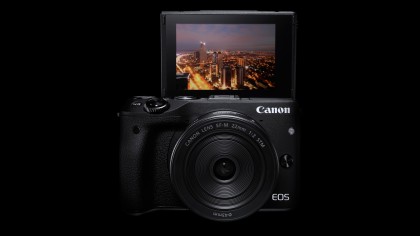
The screen is an sRGB ClearView II device with 3:2 aspect ratio, which suits the native aspect ratio of images from the sensor and it provides a very clear view indoors and in shaded situations. Reflections are an issue in direct sunlight, but with the screen set to its maximum brightness it is still possible to compose images. It’s a shame that Canon hasn’t built a viewfinder in to the M3, but at least there is an optional one available.
It’s easy to connect the M3 to a smartphone using the Wi-Fi system and images can be transferred and shared quickly.
Performance
While the EOS M3 is capable of capturing lots of detail, it isn’t always as easy to do so as you might like. As with the original M, the problem is often down to the focusing system. In many cases it focuses the lens very quickly and accurately, but there are other times when it indicates that the subject is sharp when it clearly isn’t.
There were times during this test when the active AF area was completely filled with the intended target and the box was green to indicate that the lens had been focused, but it was quite clear that the subject was out of focus and it was the background that was sharp. This didn’t just happen once or twice, it was on numerous occasions and it happened when using both the 18-55mm kit lens and the 22mm lens that was supplied for this review.

Click here for a full size version.
It’s particularly frustrating to have the AF system indicate that the subject is sharp when you’re shooting with the camera at an awkward angle, or the subject is quite small in the frame because you often can’t see that it’s got it wrong until you zoom into the shot or open the image on a computer.
Even at its smallest setting, in 1-point AF mode the autofocus point is also quite large so it’s not possible to isolate small subjects in the frame. I suspect that the reason for this comparatively large AF area is to increase the likelihood of a high contrast edge being present for the camera to latch on to.

Click here for a full size version.
We also found that the EF-M 18-55mm f/3.5-5.6 IS STM kit lens doesn’t get the best from the sensor and if you want to capture the level of detail that we know is possible from the sensor (it’s the same unit as is in the Canon 750D and Canon 760D) you need to swap to a better optic like the EF-M 22mm f2 STM .
At 100% magnification and with noise reduction set to the standard level, low to mid-sensitivity JPEG images from the M3 look a little more natural than comparable images from the Sony Alpha 6000, but there’s very little in it. At higher sensitivity settings the M3’s JPEGs have a some chroma (colour) noise, but there’s less loss of detail than in images from the A6000. At normal view sizes, however, images look similar.

Click here for a full size version.

Click here for a full size version.
Generally, the M3 controls noise well throughout the native sensitivity setting, ISO 100-12,800, with the top value giving decent results that withstand viewing at A4 size provided you don’t mind a little fine-grained noise. Happily, there’s no banding, clumping or problems with colour shifts.
As usual, raw files produce the best results allowing you to find a balance between noise and detail visibility.
In other respects the M3 gives a good account of itself as it generally delivers well exposed images with good colour. The metering and white balance systems perform as we have come to expect from Canon EOS cameras. I found the automatic and Daylight white balance settings the most useful, but the Custom or Manual option comes in handy in artificial lighting if you want to produce neutral images.
Lab tests: Resolution
We’ve carried out lab tests on the Canon EOS M3 across its full ISO range for resolution, noise (including signal to noise ratio) and dynamic range. We test the JPEGs shot by the camera, but we also check the performance with raw files. Most enthusiasts and pros prefer to shoot raw, and the results can often be quite different.
We’ve also picked out three of its chief rivals so that you can compare their performance directly.
• Samsung NX500: Like the EOS M3, the Samsung NX500 has a box-shaped design with an LCD display but no viewfinder. It also has Samsung’s latest and best sensor.
• Sony A6000: The A6000 is Sony’s top APS-C format Alpha compact system camera. It has a great sensor, and its rectangular body also houses and electronic viewfinder.
• Olympus OM-D E-M10: Olympus’s entry-level OM-D series compact system camera is styled like a DSLR, with an electronic viewfinder on the top, but it’s still super-small.
Canon EOS M3 resolution chart
We test camera resolution using an industry-standard ISO test chart that allows precise visual comparisons. This gives us numerical values for resolution in line widths/picture height, and you can see how the Nikon 1 J5 compares with its rivals in the charts below.

JPEG analysis: This graph shows that the M3 captures a good level of detail for much of its sensitivity range, but that two of its key rivals – the Samsung NX500 and Sony A6000 are better still, particularly at low-medium ISOs.

Raw* analysis: These results show how the M3 fares when the EF-M 22mm f/2 STM lens is mounted, we found we got scores of 4 (x100) LWPH lower when the EF-M 18-55mm f/3.5-5.6 IS STM kit lens was mounted. Again, the EOS M3 delivers good results, but not as good as the Samsung and the Sony.
(*Raw files are converted to TIFF using the cameras supplied software)
Resolution test chart samples
This is the chart we use for testing camera resolution. The key area is just to the right of centre, where a series of converging lines indicates the point at which the camera can no longer resolve them individually.

This is the Canon EOS M3’s test chart at ISO 100. Click here for a full size version.

And this is the same chart at ISO 6400. Click here for a full size version.
Lab tests: Dynamic range
Dynamic range is a measure of the range of tones the sensor can capture. Cameras with low dynamic range will often show ‘blown’ highlights or blocked-in shadows. This test is carried out in controlled conditions using DxO hardware and analysis tools.

- Noise and dynamic range results explained
Dynamic range is measured in exposure values (EV). The higher the number the wider the range of brightness levels the camera can capture. This falls off with increasing ISO settings because the camera is having to amplify a weaker signal. Raw files capture a higher dynamic range because the image data is unprocessed.
Canon EOS M3 dynamic range chart

JPEG dynamic range analysis: JPEG dynamic range is a feature of contrast and in the default Picture Style (Standard) the M3’s images have pleasing contrast. Tonal gradation is also retained fairly well in the shadows and highlights. All four cameras are quite close when shooting JPEG images.

Raw dynamic range analysis: After conversion to TIFF, the M3’s raw files have a slightly higher dynamic range than the JPEGs, but they don’t hit quite the highs of the competing cameras. The results from the Sony A6000 are similar, but the Samsung NX500 and Olympus E-M10 deliver much better results.
Lab tests: Signal to noise ratio
This is a test of the camera’s noise levels. The higher the signal to noise ratio, the greater the difference in strength between the real image data and random background noise, so the ‘cleaner’ the image will look. The higher the signal to noise ratio, the better.
Canon EOS M3 signal to noise ratio chart

JPEG signal to noise ratio analysis: At the lowest sensitivity values the M3 has a similar score to the Samsung NX500 and Sony A6000, but it drops behind as sensitivity rises, indicating that images are a little noisier. This is confirmed by our ‘real world’ images. Revealing a bit more noise gives the M3’s images more bite, and helps them look a little sharper at 100%.

Raw signal to noise ratio: The M3’s raw files (after conversion to TIFF) compare more favourably than the JPEGs, suggesting that the files have more detail and less noise. Even so, its results fall in the middle of the range and the Samsung NX500 and Olympus E-M10 are clearly
Noise/sensitivity samples
The signal to noise ratio charts use laboratory test equipment, but we also shoot a real-world scene to get a visual indication of the camera’s noise levels across the ISO range. The right side of the scene is darkened deliberately because this makes noise more obvious.

This is the Canon EOS M3’s result at ISO 100. Click here to view a full size version.

And this is the same scene at ISO 6400. Click here to see a full size version.
Verdict
With Canon’s new 24.2-million-effective-pixel CMOS sensor and DIGIC 6 processor the M3 has a lot of potential, but this is restricted by a few factors. The first of these is the lack of a built-in viewfinder, which makes it hard to compose images in very bright conditions. Happily there is a solution for this in the guise of an external electronic viewfinder.


The autofocus system can also be very frustrating in some situations, as it has a habit of indicating that the subject is sharp when it’s not. This makes you doubt the camera and you find yourself checking images on a regular basis to make sure that the subject is sharp. Lastly, we found that the kit lens is a lacklustre performer that doesn’t do the sensor justice.
It’s a shame because with the right lens mounted the M3 is capable of capturing lots of detail and attractive, vibrant colours.
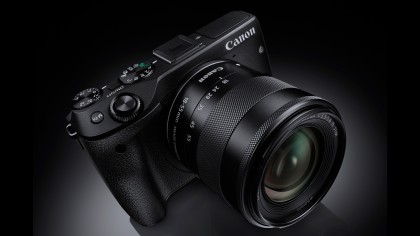
We liked
Once again Canon has implemented the touchscreen well giving users the opportunity to switch between using the screen and using buttons or dials to control the camera and navigate through images. Image quality is also very high.
We disliked
As mentioned earlier, the lack of a built-in viewfinder is annoying, but the inconsistent performance of the autofocus system is more worrying. Other cameras like the Panasonic GX7, Olympus OM-D E-M10 and Sony Alpha 6000 allow more precise focus point selection and they get the subject sharp more consistently, rarely giving false positives (when the camera thinks the AF system has focused on the target, but it hasn’t).
Verdict
The M3 has some tough competition and as with the original M, the new camera is capable of producing high quality images that are at least a match for those from cameras such as the Olympus OM-D E-M10 and Sony Alpha 6000. However, the occasionally frustrating autofocus system and Canon’s lack of commitment to the system, with a failure to bring out an enticing line-up of lenses or accessories, means that those looking for a smaller alternative to an SLR are better off looking elsewhere.

Inexperienced photographers are less likely to be concerned about the limited number of directly compatible lenses and will be happy with the step up in image quality in comparison with a point-and-shoot compact camera or the average smartphone. Nevertheless, there will be times when they struggle to get the subject sharp.
- Canon EOS M review
- Camera reviews
- Best mirrorless camera
![]()
Related Posts
December 6, 2021
7+ Web Design Trends for 2022: Which Will You Use?
December 6, 2021
The 10 Best WordPress Booking Plugins to Use On Your Website
December 6, 2021
How to Use a Web Cache Viewer to View a Cached Page
November 6, 2021
10 Modern Web Design Trends for 2022
November 6, 2021
Best Free SSL Certificate Providers (+ How to Get Started)
November 6, 2021
How to Design a Landing Page That Sends Conversions Skyrocketing
November 6, 2021
What Are the Best WordPress Security Plugins for your Website?
October 6, 2021
Your Guide to How to Buy a Domain Name
October 6, 2021
How to Build a WordPress Website: 9 Steps to Build Your Site
September 6, 2021
10 Best Websites for Downloading Free PSD Files
September 6, 2021
HTML5 Template: A Basic Code Template to Start Your Next Project
September 6, 2021
How Much Does It Cost to Build a Website for a Small Business?
September 6, 2021
A List of Free Public CDNs for Web Developers
September 6, 2021
6 Advanced JavaScript Concepts You Should Know
August 6, 2021
10 Simple Tips for Launching a Website
August 6, 2021
25 Beautiful Examples of “Coming Soon” Pages
August 6, 2021
10 Useful Responsive Design Testing Tools
August 6, 2021
Best-Converting Shopify Themes: 4 Best Shopify Themes
July 6, 2021
What Is Alt Text and Why Should You Use It?
July 6, 2021
24 Must-Know Graphic Design Terms
June 6, 2021
How to Design a Product Page: 6 Pro Design Tips
April 6, 2021
A Beginner’s Guide to Competitor Website Analysis
April 6, 2021
6 BigCommerce Design Tips For Big Ecommerce Results
April 6, 2021
Is WordPress Good for Ecommerce? [Pros and Cons]
March 6, 2021
Make Websites Mobile-Friendly: 5 Astounding Tips
March 6, 2021
Shopify vs. Magento: Which Platform Should I Use?
March 6, 2021
Top 5 Web Design Tools & Software Applications
February 6, 2021
Website Optimization Checklist: Your Go-To Guide to SEO
February 6, 2021
5 UX Design Trends to Dazzle Users in 2021
February 6, 2021
What Is the Average Page Load Time and How Can You Do Better?
February 6, 2021
Choosing an Ecommerce Platform That Will Wow Customers
February 6, 2021
7 Best Practices for Crafting Landing Pages with Forms
February 6, 2021
7 B2B Web Design Tips to Craft an Eye-Catching Website
January 6, 2021
Mobile-Friendly Checker | Check Your Site’s Mobile Score Now
January 6, 2021
8 Tips for Developing a Fantastic Mobile-Friendly Website
December 6, 2020
How to Add an Online Store to Your Website [4 Ways]
December 6, 2020
5 UX Design Tips for Seamless Online Shopping
November 6, 2020
Ecommerce Website Essentials: Does Your Site Have All 11?
November 6, 2020
5 Small Business Website Essentials You Need for Your Site
November 6, 2020
Your Website Redesign Checklist for 2020: 7 Steps for Success
May 1, 2020
Psychology of Color [Infographic]
April 21, 2020
How to start an online store that drives huge sales
January 3, 2020
5 Lead Generation Website Design Best Practices
March 6, 2019
6 Reasons You Should Redesign Your Website in 2019
March 6, 2019
7 Web Design Trends for 2019
February 19, 2019
Who owns the website/app source code, client or developer
February 7, 2019
Don’t Let Your Domain Names Expire in 2019
January 8, 2019
2019 Website Development Trends To Note
October 6, 2017
How Web Design Impacts Content Marketing
October 6, 2017
How to Choose a Navigation Setup
August 6, 2017
Why User Experience Matters to Marketing
July 6, 2017
5 Ways Web Design Impacts Customer Experience
September 6, 2016
How to Learn Angular
September 6, 2016
The Excuses for Not Having a Website (Infographic)
September 6, 2016
How to Build an Award-Winning Web Design Team
September 6, 2016
13 Free Data Visualization Tools
August 6, 2016
How Selling Pastries Helped Us Design a Better Product
August 6, 2016
11 Sites to Help You Find Material Design Inspiration
July 4, 2016
How to change free wordpress.com url
April 6, 2016
The 5 Best Free FTP Clients
April 6, 2016
7 Free UX E-Books Worth Reading
March 6, 2016
Can Handwritten Letters Get You More Clients?
December 10, 2015
Star Wars Week: How to create your own Star Wars effects for free
December 6, 2015
20 "Coming Soon" Pages for Inspiration
December 6, 2015
6 Free Tools for Creating Your Own Icon Font
December 6, 2015
9 Useful Tools for Creating Material Design Color Palettes
November 6, 2015
20 Free UI Kits to Download
November 6, 2015
50 Web Designs with Awesome Typography
November 6, 2015
When to Use rel="nofollow"
November 6, 2015
7 Free Books That Will Help You Become More Productive
November 6, 2015
50 Beautiful One-Page Websites for Inspiration
November 6, 2015
Circular Images with CSS
October 6, 2015
Lessons Learned from an Unsuccessful Kickstarter
October 6, 2015
5 Games That Teach You How to Code
October 6, 2015
Cheatsheet: Photoshop Keyboard Shortcuts
October 6, 2015
An Easy Way to Create a Freelance Contract for Your Projects
October 6, 2015
50 Design Agency Websites for Inspiration
September 29, 2015
JB Hi-Fi shutting the book on ebooks
September 24, 2015
Opinion: Quick, Quickflix: It's time to give yourself the flick
September 24, 2015
New Star Wars 360-degree video is among first on Facebook
September 21, 2015
Apple purges malicious iPhone and iPad apps from App Store
September 12, 2015
Apple's new Live Photos feature will eat up your storage
September 12, 2015
The latest Windows 10 Mobile preview has been delayed
September 12, 2015
IBM buys StrongLoop to add Node.js development to its cloud
September 8, 2015
Fake Android porn app takes your photo, then holds it ransom
September 6, 2015
50 Restaurant Websites for Inspiration
September 6, 2015
Zero UI — The Future of Interfaces
September 6, 2015
50 Beautiful Websites with Big Background Images
September 6, 2015
Infographic: 69 Web Design Tips
September 6, 2015
Free Windows 10 Icons
September 2, 2015
Instagram turns itself into a genuine messaging service
August 11, 2015
In Depth: How Microsoft taught Cortana to be more human
August 11, 2015
Windows 10 price, news and features
August 11, 2015
Windows 10's broken update introduces endless reboot loop
August 11, 2015
Windows 10 races to 27m installs
August 11, 2015
Windows 10 IoT Core gets first public release
August 10, 2015
iOS Tips: How to backup iPhone to an external drive
August 10, 2015
Windows 8.1 RT finally getting Windows 10 Start Menu
August 10, 2015
How to use Windows Hello
August 10, 2015
Review: Moto Surround
August 10, 2015
Review: Moto G (2015)
August 9, 2015
8 of the best free VPN services
August 8, 2015
Use Firefox? Mozilla urges you update ASAP
August 7, 2015
Mac Tips: Apple Mail: How to remove the Favorites Bar
August 7, 2015
How to make the OS X dock appear faster
August 7, 2015
Review: BQ Aquaris E45 Ubuntu Edition
August 7, 2015
Review: Acer Liquid Jade Z
August 6, 2015
How to reinstall Linux
August 6, 2015
How to reinstall Windows
August 6, 2015
Updated: Apple Music: release date, price and features
August 6, 2015
Social News Websites for Front-End Developers
August 6, 2015
10 Free JavaScript Books
August 6, 2015
50 Beautiful Blog Designs
August 6, 2015
Animated SVG Pipes Effect
August 6, 2015
Launching Your First App
August 5, 2015
Windows 10 goes freemium with paid apps
August 5, 2015
Updated: Week 1 with Windows 10
August 5, 2015
Mac Tips: How to manage Safari notifications on Mac
August 5, 2015
Microsoft Sway may kill the PowerPoint presentation
August 4, 2015
Microsoft gives Outlook on the web a new look
August 4, 2015
Mac OS X vulnerable to new zero-day attack
August 4, 2015
Windows 10 users warned of two scams
August 4, 2015
Microsoft's Docs.com is now available to everyone
August 3, 2015
Mac Tips: How to edit the Favorites sidebar on Mac
August 3, 2015
Updated: Windows 10 price, news and features
July 29, 2015
Review: HP ProDesk 405 G2
July 29, 2015
Hands-on review: HP Elite x2 1011
July 29, 2015
Hands-on review: Updated: Windows 10 Mobile
July 29, 2015
Review: Updated: Nvidia Shield Android TV
July 28, 2015
LIVE: Windows 10 launch: Live Blog!
July 28, 2015
How to prepare for your upgrade to Windows 10
July 28, 2015
Review: Updated: Windows 10
July 28, 2015
Review: Updated: HP Pro Tablet 608
July 28, 2015
Review: Heat Genius
July 28, 2015
Hands-on review: Moto X Play
July 28, 2015
Hands-on review: Moto X Style
July 28, 2015
Hands-on review: Moto G (2015)
July 28, 2015
Review: 13-inch MacBook Air (early 2015)
July 28, 2015
Hands-on review: OnePlus 2
July 28, 2015
Review: LG 65EG960T 4K OLED
July 28, 2015
Mac Tips: How to share printers on Mac
July 27, 2015
Apple Music's arrival hasn't opened Pandora's box
July 26, 2015
Review: Garmin Swim
July 25, 2015
How to merge OS X contacts into an existing list
July 25, 2015
Hands-on review: UPDATED: ZTE Axon
July 24, 2015
Mac Tips: How to zoom in on a Mac
July 24, 2015
What Windows 10 means for the enterprise
July 24, 2015
Review: JBL Charge 2 Plus
July 24, 2015
Review: Acer Aspire S7
July 24, 2015
Review: Updated: Canon G3 X
July 24, 2015
Review: Updated: iPad Air 2
July 24, 2015
Review: Thinksound On1
July 24, 2015
Review: Asus Chromebook Flip
July 24, 2015
Review: Garmin Forerunner 225
July 23, 2015
Review: Garmin nuvi 68LM
July 23, 2015
Review: Samsung Galaxy S6 Active
July 23, 2015
Review: Bowers and Wilkins P5 Wireless
July 23, 2015
Review: Dell XPS 15 (2015)
July 21, 2015
Review: Fuji S9900W
July 21, 2015
Review: Updated: Fitbit Surge
July 21, 2015
Review: UE Roll
July 21, 2015
Hands-on review: Ubik Uno
July 20, 2015
Review: Samsung HW-J650
July 20, 2015
Updated: 40 best Android Wear smartwatch apps 2015
July 20, 2015
Review: Acer Chromebook C740 review
July 20, 2015
Review: Huawei Talkband B2
July 20, 2015
Review: Dell Venue 10 7000
July 20, 2015
Review: Intel Core i7-5775C
July 17, 2015
Mac Tips: How to delete locked files on Mac
July 17, 2015
Review: Pebble Time
July 16, 2015
Microsoft just made Windows XP even less secure
July 16, 2015
Windows 8.1 RT is getting an update this September
July 16, 2015
OS showdown: Windows 10 vs Windows 8.1 vs Windows 7
July 16, 2015
Review: Acer CB280HK
July 15, 2015
Windows 10 is ready for new laptops and PCs
July 15, 2015
Explained: How to take a screenshot in Windows
July 15, 2015
Office for Windows 10 appears in latest build
July 14, 2015
Review: ZTE Axon
July 14, 2015
Review: ViewSonic VP2780-4K
July 14, 2015
Hands-on review: SanDisk Connect Wireless Stick
July 14, 2015
Review: Oppo PM-3
July 14, 2015
Review: BT 11ac Dual-Band Wi-Fi Extender 1200
July 14, 2015
Review: Fuji X-T10
July 13, 2015
How to build an SEO strategy for your business
July 13, 2015
Review: Lenovo ThinkPad Yoga 15
July 13, 2015
Review: Audio-Technica ATH-MSR7
July 13, 2015
Review: Garmin NuviCam LMT-D
July 13, 2015
Review: Dell Inspiron 13 7000
July 13, 2015
Hands-on review: AstroPi SenseHAT
July 13, 2015
Hands-on review: EE Rook
July 13, 2015
Hands-on review: Updated: HTC Vive
July 12, 2015
Here's the ultimate software list for PC fanatics
July 10, 2015
How to use the new Photos app for Mac
July 10, 2015
Windows 10 Insider Preview Build 10166 available now
July 10, 2015
Splunk spends big on cybersecurity acquisition
July 10, 2015
Making Windows 10 apps just got a whole lot easier
July 10, 2015
Review: Lenovo LaVie Z 360
July 9, 2015
OS X El Capitan public beta available right now
July 9, 2015
Microsoft finally unveils Office 2016 for Mac
July 9, 2015
Review: Updated: Chromecast
July 9, 2015
Review: Updated: Tesco Hudl 2
July 9, 2015
Review: Lenovo ThinkPad E550
July 9, 2015
Review: Updated: Google Nexus 6
July 8, 2015
What you need to know about Windows Server 2016
July 7, 2015
Microsoft to hike enterprise cloud pricing
July 6, 2015
Hacking Team end up being totally 0wned
July 6, 2015
Review: HP Pro Slate 12
July 6, 2015
Review: Samsung 850 Pro 2TB
July 6, 2015
Review: Asus RT-AC87U
July 6, 2015
Review: Jawbone UP2
July 6, 2015
Reimagining the Web Design Process
July 6, 2015
50 Clean Websites for Inspiration
July 6, 2015
15 Free Books for People Who Code
July 6, 2015
Web Storage: A Primer
July 6, 2015
A Look at Some CSS Methodologies
July 3, 2015
6 Essential Mac Mouse and Trackpad Tips
July 2, 2015
How to install a third party keyboard on Android
July 2, 2015
Review: UPDATED: Asus Zenfone 2
July 2, 2015
Review: Alienware 13
July 2, 2015
Review: HP DeskJet 1010
July 1, 2015
5 issues we want Apple Music to fix
June 13, 2015
Cortana will get its own button on Windows 10 PCs
June 12, 2015
Windows 10 will come with universal Skype app
June 12, 2015
iPad music production: 18 Best apps and gear
June 12, 2015
Windows 10 all set for early enterprise struggle
June 12, 2015
Review: Garmin VIRB Elite
June 11, 2015
Review: Updated: Nvidia Shield Tablet
June 11, 2015
Review: Nokia Lumia 635
June 10, 2015
Microsoft brings more online tweaks to Office 365
June 10, 2015
Mac Tips: How to use Screen Sharing in Mac OS X
June 9, 2015
Hands-on review: Meizu M2 Note
June 9, 2015
Hands-on review: EE 4GEE Action Camera
June 9, 2015
Review: Toshiba 3TB Canvio external hard drive
June 9, 2015
Review: Olympus SH-2
June 8, 2015
Hands-on review: Updated: Apple CarPlay
June 8, 2015
UPDATED: iOS 9 release date, features and news
June 8, 2015
Review: Updated: Roku 2
June 8, 2015
Review: Updated: PlayStation Vue
June 8, 2015
Review: Dell PowerEdge R730
June 8, 2015
Review: Canon SX710 HS
June 7, 2015
UPDATED: iOS 9 release date, features and rumors
June 7, 2015
Review: Lenovo S20-30
June 6, 2015
Free Writing Icons
June 6, 2015
15 CSS Questions to Test Your Knowledge
June 6, 2015
The Best CSS Reset Stylesheets
June 6, 2015
How CSS Specificity Works
June 5, 2015
'Delay' is a new feature in Windows 10
June 5, 2015
Review: Beyerdynamic Custom One Pro Plus
June 5, 2015
Latest SEO Marketing tools
June 5, 2015
Review: Nvidia Shield Android TV
June 5, 2015
Review: Honor 4X
June 5, 2015
Review: In Depth: Oppo R5
June 3, 2015
Hands-on review: Huawei P8 Lite
June 3, 2015
How To: How to create eBooks on a Mac
June 3, 2015
Review: Updated: Tidal
June 3, 2015
Review: Canon 750D (Rebel T6i)
June 2, 2015
Review: Updated: Asus ZenWatch
June 2, 2015
Review: Alcatel OneTouch Idol 3
June 2, 2015
Review: Updated: Nokia Lumia 1520
June 2, 2015
Review: Updated: Yotaphone 2
June 2, 2015
Review: Updated: Nokia Lumia 625
June 2, 2015
Review: Creative Muvo Mini
June 1, 2015
Review: Acer TravelMate P645 (2015)
June 1, 2015
Hands-on review: Corsair Bulldog
May 29, 2015
In Depth: NetApp: a requiem
May 29, 2015
July is looking definite for Windows 10 release
May 29, 2015
Hands-on review: Google Photos
May 28, 2015
Mac Tips: The 16 best free GarageBand plugins
May 28, 2015
Review: Canon 760D (Rebel T6s)
May 27, 2015
Review: Lenovo Yoga 3 14
May 27, 2015
Hands-on review: Serif Affinity Photo
May 27, 2015
Review: Garmin Vivoactive
May 26, 2015
Review: Datacolor Spyder5 Elite
May 26, 2015
Hands-on review: Sony Xperia Z3+
May 26, 2015
Review: Epson BrightLink Pro 1410Wi
May 26, 2015
Review: Technics Premium C700
May 26, 2015
Review: Updated: HTC One M9
May 26, 2015
Review: Updated: Sony Xperia Z3 Compact
May 25, 2015
Review: Updated: New Nintendo 3DS
May 25, 2015
Updated: 50 best Mac tips, tricks and timesavers
May 25, 2015
Updated: Windows email: 5 best free clients
May 25, 2015
Instagram is planning to invade your inbox
May 25, 2015
Review: Updated: Foxtel Play
May 24, 2015
How Windows 10 will change smartphones forever
May 24, 2015
Review: Vodafone Smart Prime 6
May 24, 2015
Review: Updated: iPad mini
May 22, 2015
Office Now may be Cortana for your work life
May 22, 2015
Review: Updated: Lenovo Yoga 3 Pro
May 22, 2015
Review: Microsoft Lumia 640 LTE
May 22, 2015
Review: Updated: Fitbit Flex
May 21, 2015
Updated: Best free Android apps 2015
May 21, 2015
Review: Asus ZenBook Pro UX501
May 21, 2015
Review: Sennheiser Momentum In-Ear
May 20, 2015
Hands-on review: UPDATED: Asus Zenfone 2
May 20, 2015
OS X 10.11 release date, features and rumors
May 18, 2015
Updated: Best free antivirus software 2015
May 18, 2015
iPhone 6S rumored to launch as soon as August
May 18, 2015
Microsoft ready to pounce and acquire IFS?
May 17, 2015
5 of the most popular Linux gaming distros
May 16, 2015
Review: Acer Chromebook 15 C910
May 16, 2015
Review: Lenovo ThinkPad X1 Carbon (2015)
May 16, 2015
Review: Polk Nue Voe
May 16, 2015
The top 10 data breaches of the past 12 months
May 16, 2015
Hands-on review: Updated: LG G4
May 16, 2015
Review: Updated: Quickflix
May 16, 2015
Review: LG Watch Urbane
May 16, 2015
Review: Razer Nabu X
May 16, 2015
Hands-on review: Updated: Windows 10
May 16, 2015
Review: UPDATED: Moto X
May 16, 2015
Review: Updated: Moto G (2013)
May 12, 2015
Review: TomTom Go 50
May 12, 2015
Review: Updated: Moto G (2014)
May 12, 2015
Review: Garmin Vivofit 2
May 12, 2015
Review: Asus Transformer Book Flip TP300LA
May 11, 2015
Review: MSI GT80 Titan
May 11, 2015
Review: Monster SuperStar BackFloat
May 9, 2015
Review: Updated: Apple Watch
May 7, 2015
5 million internet users infected by adware
May 7, 2015
Review: Updated: New MacBook 2015
May 6, 2015
Android M will be shown at Google IO 2015
May 6, 2015
Review: Epson WorkForce Pro WF-4630
May 6, 2015
Review: Master & Dynamic MH40
May 6, 2015
How to Use Gulp
May 6, 2015
Getting Started with Command-Line Interfaces
May 6, 2015
What It’s Like to Contribute to WordPress
May 6, 2015
Ultimate Guide to Link Types for Hyperlinks
May 6, 2015
11 Things You Might Not Know About jQuery
May 5, 2015
Hands-on review: Updated: PlayStation Now
May 5, 2015
Review: Lenovo ThinkPad Yoga 12
May 5, 2015
Review: Updated: iPad Air
May 5, 2015
Review: Panasonic SZ10
May 5, 2015
Review: Updated: Fetch TV
May 4, 2015
Review: Cambridge Audio Go V2
May 3, 2015
Review: Lightroom CC/Lightroom 6
May 2, 2015
5 of the most popular Raspberry Pi distros
May 1, 2015
Review: PlayStation Vue
May 1, 2015
Hands-on review: Updated: Microsoft HoloLens
April 30, 2015
Build 2015: Why Windows 10 may not arrive until fall
April 29, 2015
The biggest announcements from Microsoft Build 2015
April 29, 2015
Hands-on review: TomTom Bandit
April 29, 2015
Hands-on review: EE Harrier Mini
April 28, 2015
Review: Samsung NX500
April 28, 2015
Hands-on review: LG G4
April 28, 2015
Review: Patriot Ignite 480GB SSD
April 28, 2015
Hands-on review: EE Harrier
April 28, 2015
Review: Linx 10
April 28, 2015
Review: 1&1 Cloud Server
April 26, 2015
Hands-on review: Acer Iconia One 8
April 25, 2015
How to run Windows on a Mac with Boot Camp
April 24, 2015
Dropbox Notes poised to challenge Google Docs at launch
April 24, 2015
Hands-on review: Acer Aspire E14
April 24, 2015
Hands-on review: UPDATED: Valve Steam Controller
April 24, 2015
Review: Acer Iconia One 7
April 23, 2015
Windows 10 just revived everyone's favorite PC game
April 23, 2015
Google opens up Chromebooks to competitors
April 23, 2015
Here's how Outlook 2016 looks on Windows 10
April 23, 2015
Hands-on review: Updated: Acer Liquid M220
April 23, 2015
Hands-on review: Acer Aspire Switch 10 (2015)
April 23, 2015
Hands-on review: Acer Aspire R 11
April 22, 2015
Review: Alienware 17 (2015)
April 22, 2015
Hands-on review: Updated: HP Pavilion 15 (2015)
April 21, 2015
This is how Windows 10 will arrive on your PC
April 21, 2015
Review: iMac with Retina 5K display
April 21, 2015
Review: Epson XP-420 All-in-One
April 18, 2015
Google Now brings better search to Chrome OS
April 17, 2015
Review: Epson Moverio BT-200
April 17, 2015
Review: Pentax K-S2
April 16, 2015
Updated: Android Lollipop 5.0 update: when can I get it?
April 15, 2015
Hands-on review: Updated: Huawei P8
April 15, 2015
Review: SanDisk Ultra Dual USB Drive 3.0
April 15, 2015
Review: Updated: LG G3
April 15, 2015
Review: Updated: LG G3
April 15, 2015
Review: Crucial BX100 1TB
April 13, 2015
iOS 8.4 beta reveals complete Music app overhaul
April 13, 2015
Linux 4.0: little fanfare for a tiny new release
April 13, 2015
Achievement unlocked: Microsoft gamifies Windows 10
April 13, 2015
Best Android Wear smartwatch apps 2015
April 13, 2015
Review: Acer Aspire R13
April 12, 2015
Review: TP-Link Archer D9
April 10, 2015
Microsoft's new browser arrives for Windows 10 phones
April 10, 2015
Review: LG UltraWide 34UC97
April 9, 2015
Office now integrates with Dropbox on the web
April 9, 2015
Now you can buy video games with Apple Pay
April 9, 2015
Updated: iOS 8 features and updates
April 9, 2015
Microsoft's stripped down Nano Server is on the way
April 8, 2015
Skype Translator gets even more features
April 8, 2015
Windows mail services hit by widespread outages
April 8, 2015
Review: UPDATED: Amazon Echo
April 8, 2015
Hands-on review: Dell Venue 10 7000
April 8, 2015
Review: Updated: OS X 10.10 Yosemite
April 7, 2015
Google's GMeet could kill teleconferencing
April 7, 2015
Is Redstone the first Windows 10 update?
April 7, 2015
Next peek at Windows Server 2016 due next month
April 7, 2015
Review: Acer Aspire Switch 11
April 7, 2015
Review: Adobe Document Cloud
April 6, 2015
Hands-on review: Updated: New MacBook 2015
April 6, 2015
Freebie: 100 Awesome App Icons
April 6, 2015
Six Revisions Quarterly Report #1
April 6, 2015
A Modern Approach to Improving Website Speed
April 6, 2015
Disable Text Selection with CSS
April 4, 2015
Review: Nikon D7200
April 3, 2015
Amazon Prime video now streams to any Android tablet
April 3, 2015
Review: Google Cardboard
April 3, 2015
Review: MSI WS60
April 2, 2015
Chrome users can now run 1.3 million Android apps
April 2, 2015
See Windows 10 Mobile running on an Android handset
April 2, 2015
Review: Mini review: Macphun Noiseless Pro 1.0
April 2, 2015
Review: Intel SSD 750 Series 1.2TB
April 2, 2015
Review: BenQ TreVolo
April 2, 2015
Hands-on review: Nikon 1 J5
April 1, 2015
Microsoft launches Windows 10 music and video apps
April 1, 2015
Review: mini review: Sony XBA-H1
December 19, 2014
Review: CoPilot Premium sat nav app
December 19, 2014




























































































































































